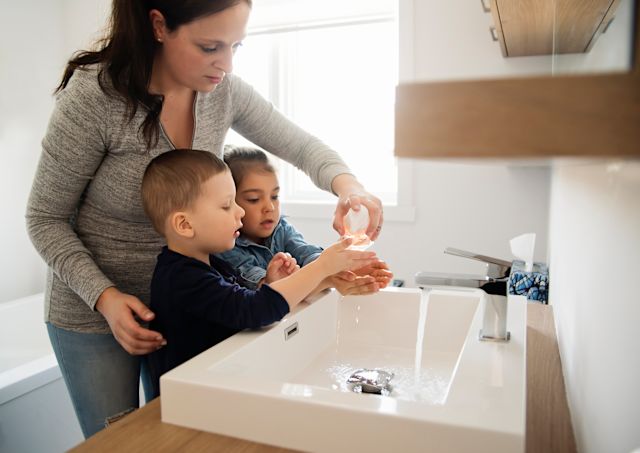Updated on January 7, 2025.
In 2020, as confirmed COVID-19 cases spiked across the United States, health officials urged people to stay home and maintain social distancing to help “flatten the curve.”
But what is a curve? And why is flatter better?
A rallying cry for a simple strategy
“Flattening the curve” has long been used by epidemiologists, the science community’s so-called disease detectives.
An epidemic curve represents the progression of an outbreak. It reflects the number of people who become sick over a set period of time.
So, a very steep curve shows that many people are being diagnosed around the same time.
A flatter curve, on the other hand, suggests that the number of new cases of a particular illness are spread out over a longer period of time—not spiking sharply.
When a curve is very steep and disease is spreading quickly, public health officials will be keen to slow it down. “Flatten the curve” is a short, simple, memorable phrase that sums this up. During the COVID pandemic, it was used to rally the public to take steps to decelerate the outbreak.
Why is “flattening the curve” so critical in a pandemic?
If an outbreak is left unchecked, the number of people who become sick with the disease could surge. If the disease causes serious illness that requires hospitalization, a surge may overwhelm hospitals. Healthcare providers (HCPs) might face dire shortages of beds. There may not be enough medications or life-saving equipment to go around. HCPs could be forced to choose which patients to save.
“Flattening the curve” helps curb the spread of disease by giving public officials and healthcare workers more time to respond effectively to the developing situation. It prevents surges and saves lives.
For an individual, “flattening the curve” may involve taking steps like:
- Staying home for a time and avoiding travel
- Limiting or avoiding visits to public spaces, especially if they’re indoors
- Practicing social distancing, or keeping a recommended distance from people in public areas
- Washing your hands thoroughly and often
- Disinfecting high-touch surfaces like counters, tables, and light switches thoroughly and often
Often, it also involves staying up-to-date on outbreak news. Accessing reliable health information from local departments of health and large-scale health care organizations like the Centers for Disease Control and Prevention can help.
Flattening the curve is just the beginning
It’s important to ensure hospitals and healthcare facilities can continue to function during an outbreak of disease. But merely flattening the curve is not enough. Other strategies must be employed when trying to control the spread of infection.
These strategies may include testing, contact tracing, using personal protection equipment like masks, and following certain hygienic practices. If and when vaccines become available for a contagious disease, it’s also vital to ensure as many people as possible become inoculated against the illness.







